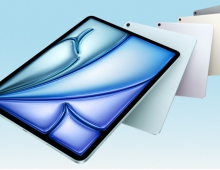
Samsung Surpassed Apple as the Top Global Semiconductor Customer in 2012
Samsung Electronics and Apple both dominated semiconductor demand in 2012, although Samsung overtook Apple as the top worldwide semiconductor customer, according to Gartner, Inc.
Based on analysis of the design total available market (TAM), Samsung and Apple together consumed $45.3 billion of semiconductors in 2012, an increase of $7.9 billion from 2011, to represent 15 percent of total semiconductor demand, while the total semiconductor market decreased by 3 percent overall.
"Although Samsung and Apple continue to go from strength to strength, other leading electronic equipment makers fared less well, and six of the top 10 reduced their demand in 2012," said Masatsune Yamaji, principal research analyst at Gartner. "In addition to a weak macroeconomic situation, a dramatic change in consumer demand contributed to a reduction in semiconductor demand in 2012. The PC market still represented the largest sector for chip demand, but desktop and mobile PCs did not sell well, as consumers' interest shifted to new mobile computing devices like smartphones and media tablets. This shift caused a substantial decrease in semiconductor demand in 2012, as the semiconductor content of a smartphone or a media tablet is far less than that of a PC."
The top 10 companies demanded $106.4 billion of semiconductors in 2012, to account for 36 percent of total semiconductor vendors' worldwide revenue of $297.6 billion (see Table 1). Of the top 10 companies, Nokia's semiconductor demand contracted most.
"While the growth of new mobile computing devices, notably smartphones and media tablets, has not fully compensated for the drop in the semiconductor demand from the PC market, the data center and communications infrastructure market will keep driving semiconductor demand. The limited computing and storage resources of new mobile computing devices will be compensated for by cloud computing services with light application software," said Mr. Yamaji.
"Price competition between smartphone and media tablet vendors was severe in 2012, as hardware differentiation was very difficult to achieve," said Mr. Yamaji. "Innovations in device hardware will soon be copied by competitors, as semiconductor vendors will soon provide commercial SoC (system-on-chip), software and reference designs to hardware vendors needing to catch up with innovative market leaders. Semiconductor vendors must aid, or at least monitor, the hardware innovations of the market leaders."
Design TAM represents the total silicon content in all products designed by a certain electronic equipment manufacturer or in a certain region.
"Although Samsung and Apple continue to go from strength to strength, other leading electronic equipment makers fared less well, and six of the top 10 reduced their demand in 2012," said Masatsune Yamaji, principal research analyst at Gartner. "In addition to a weak macroeconomic situation, a dramatic change in consumer demand contributed to a reduction in semiconductor demand in 2012. The PC market still represented the largest sector for chip demand, but desktop and mobile PCs did not sell well, as consumers' interest shifted to new mobile computing devices like smartphones and media tablets. This shift caused a substantial decrease in semiconductor demand in 2012, as the semiconductor content of a smartphone or a media tablet is far less than that of a PC."
The top 10 companies demanded $106.4 billion of semiconductors in 2012, to account for 36 percent of total semiconductor vendors' worldwide revenue of $297.6 billion (see Table 1). Of the top 10 companies, Nokia's semiconductor demand contracted most.
"While the growth of new mobile computing devices, notably smartphones and media tablets, has not fully compensated for the drop in the semiconductor demand from the PC market, the data center and communications infrastructure market will keep driving semiconductor demand. The limited computing and storage resources of new mobile computing devices will be compensated for by cloud computing services with light application software," said Mr. Yamaji.
"Price competition between smartphone and media tablet vendors was severe in 2012, as hardware differentiation was very difficult to achieve," said Mr. Yamaji. "Innovations in device hardware will soon be copied by competitors, as semiconductor vendors will soon provide commercial SoC (system-on-chip), software and reference designs to hardware vendors needing to catch up with innovative market leaders. Semiconductor vendors must aid, or at least monitor, the hardware innovations of the market leaders."
Design TAM represents the total silicon content in all products designed by a certain electronic equipment manufacturer or in a certain region.





















